Published Aug 23, 2024
Romulan Fashion: A Symbol of Strength
A brief and fashionable history of Romulan women and their shoulder pads of power.
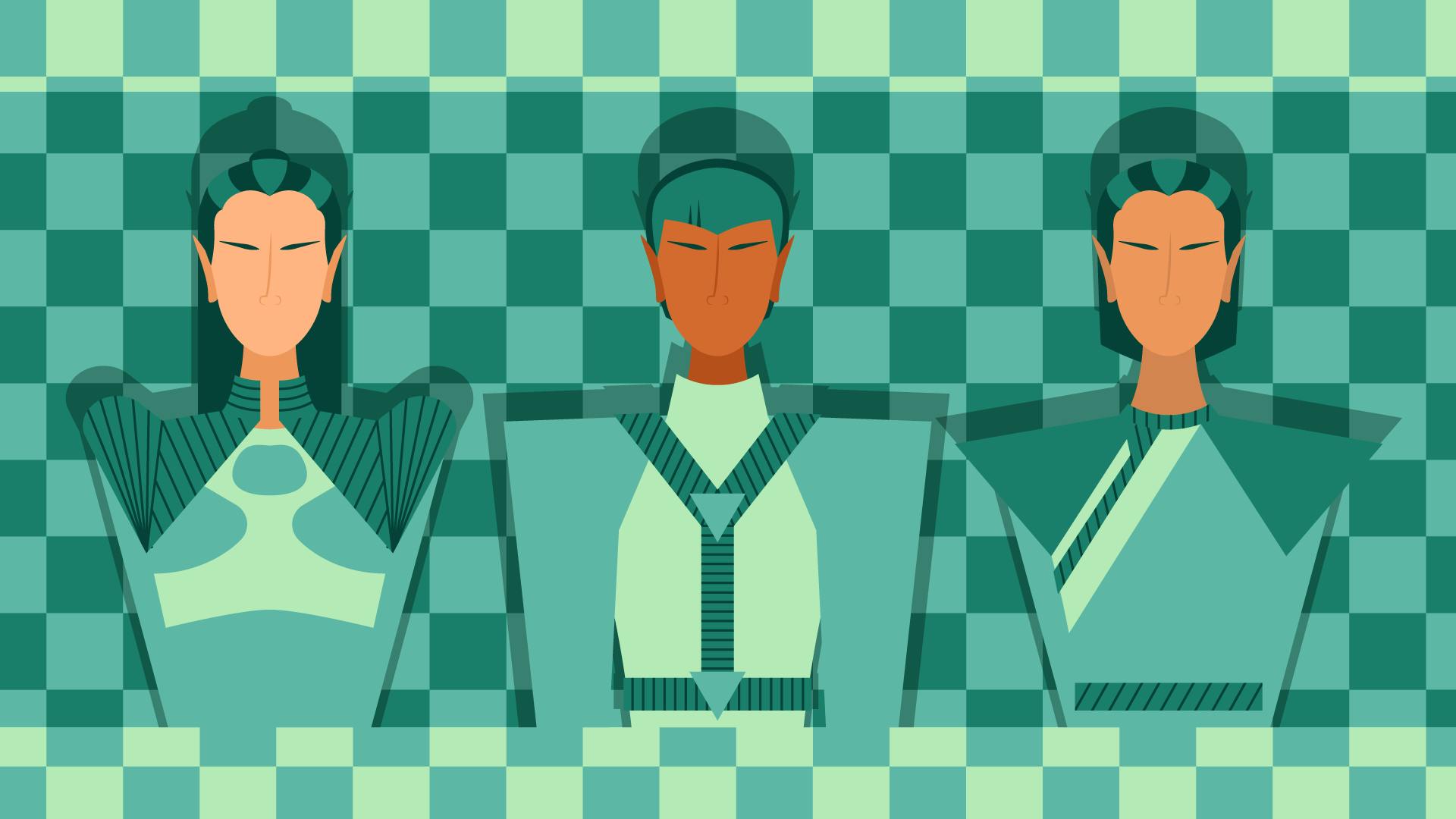
StarTrek.com
Characters like Jadzia Dax, Kira Nerys, and B'Elanna Torres gifted viewers with examples of strong women in the science fiction genre. Romulan women have remained in especially bold and authoritative roles of leadership throughout the various iterations of the show from The Original Series (TOS) to Star Trek: Picard.
Notably, the Romulans' iconic shoulder pads have come back in vogue in the Picard series. Commanding the attention of all as a symbol of strength, the shoulder pads particularly present on women characters' costumes remind new and veteran Star Trek viewers alike of the power resting on women's shoulders.
Anatomy of a Romulan
A Short History of Shoulder Pads
Initially created as men's athletic wear in the late 19th Century, shoulder pads have been a prominent part of women's fashion since the 1930s. In her article, "The History of Shoulder Pads and How They Indicate Social Progress," Sophie Shaw relays how Italian-French surrealist designer Elsa Schiaparelli first experimented with women's silhouettes using padding sewn inside clothing, notably incorporating shoulder pads inside structured jackets.
Into the 1940s, Joan Crawford brought shoulder pads to the big screen as part of her signature look, and they became a popular wartime chic style. During the Second World War, women entered the workforce in unprecedented numbers. The militaristic Victory suit with a more masculine shoulder shape helped women integrate into professional spaces previously dominated by men. Shoulder pads went out of style soon after the war, but regained popularity during the 1980s with "power dressing."
Women's power suits usually involved straight skirts or slacks paired with a shoulder-padded blazer. Among various celebrities and politicians in the late 1900s, the United Kingdom's first woman Prime Minister, Margaret Thatcher, was known for wearing shoulder pads, assuming a traditionally male-dominated role with a broad-shouldered silhouette, which costume designer Amy Roberts has brought back into public consciousness with the most current season of The Crown.
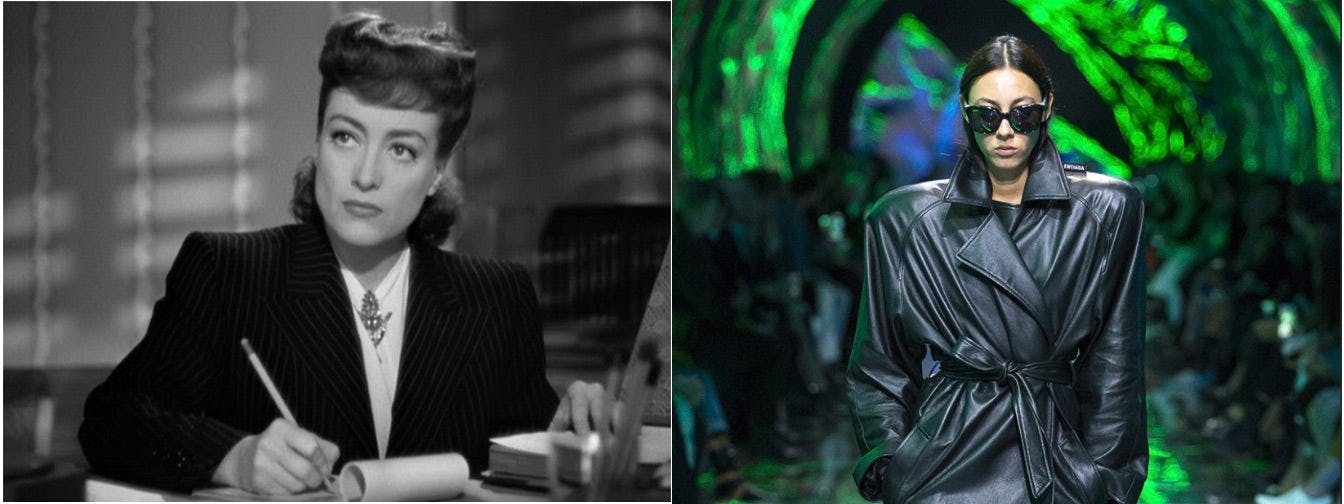
[Left] Joan Crawford sporting a shoulder-padded business jacket in "Mildred Pierce" (1945).
[Right] Example of Demna Gvasalia's Balenciaga Spring 2019 Collection
Warner Bros / Getty Images
Presently, women celebrities and politicians like Representative Alexandria Ocasio-Cortez continue to wear power suits with both traditionally masculine and feminine qualities as a symbol of professional competence and gender equality.
In 2018 and 2019, fashion designers such as Demna Gvasalia have incorporated shoulder pads into their creations experimenting with the form of both men and women's silhouettes. Using 3-D modeling to create precisely angled shoulders, Shaw reports Gvasalia's Spring/Summer 2019 collection added what has been described as a 'futuristic' element to this evolving fashion trend.
A Romulan Fashion Statement
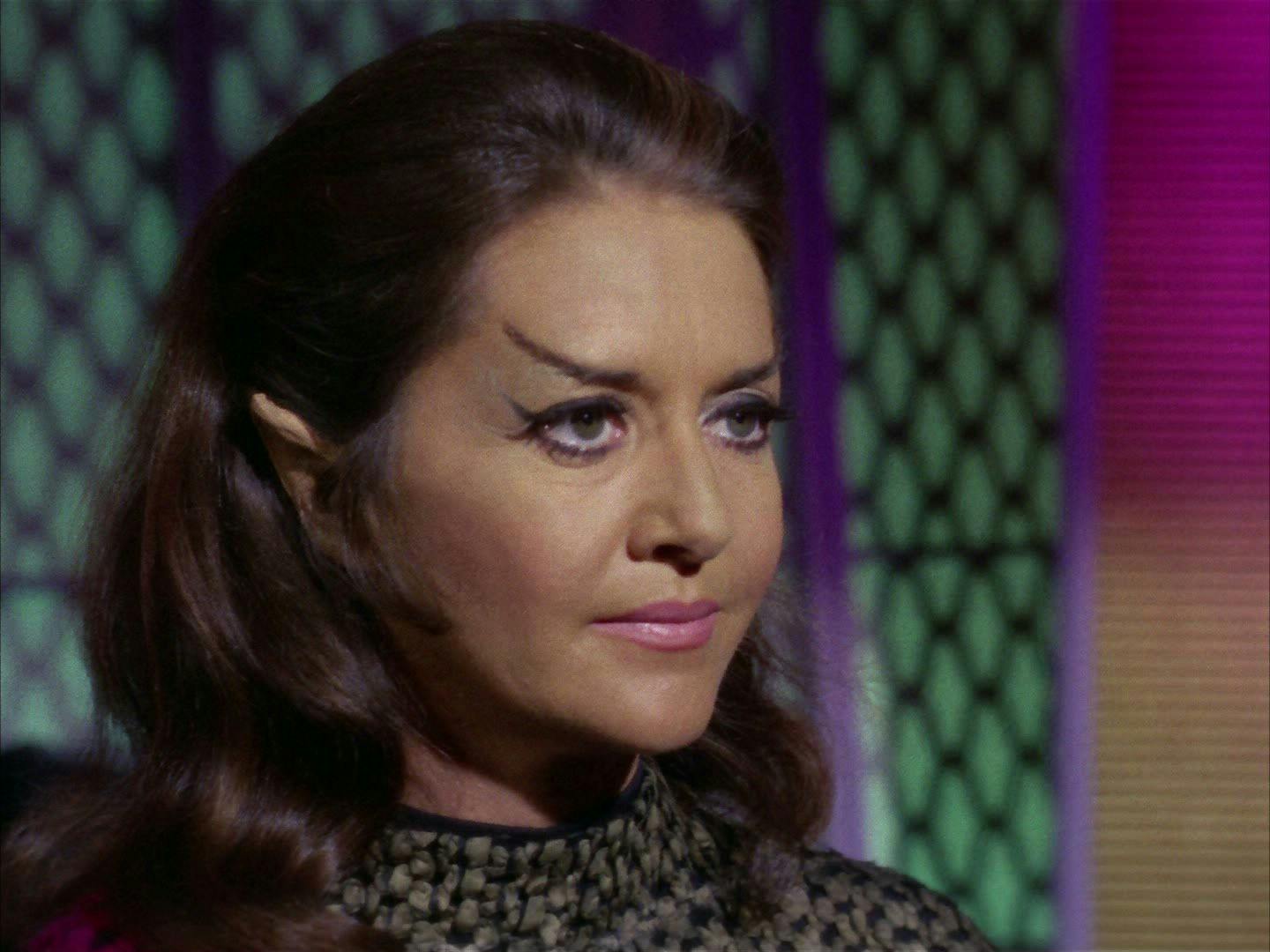
"The Enterprise Incident"
StarTrek.com
It should come as no surprise to Star Trek fans that shoulder pads are a futuristic fashion statement as a featured detail of Romulan costuming since the 1980s. On a number of women characters' costumes, shoulder pads contributed to Romulan women's commanding presence from The Next Generation to Picard.
Though sans shoulder pads, the first Romulan woman character on-screen was a powerful and intelligent Commander in the TOS episode, "The Enterprise Incident." The Commander never loses her air of authority, even after she is deceived by Kirk and Spock.
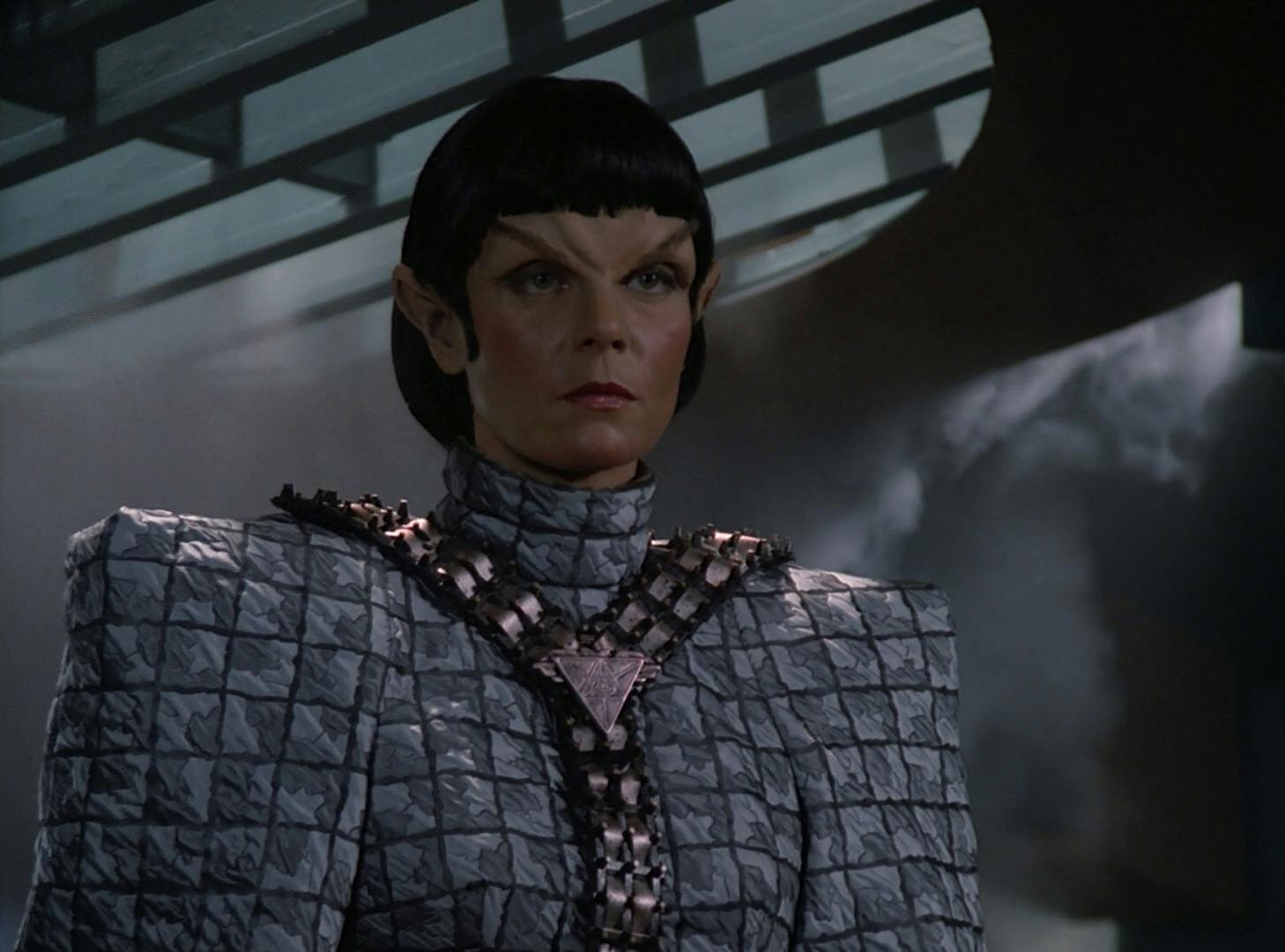
"Contagion"
StarTrek.com
The next time a woman Romulan makes an appearance is Subcommander Taris in TNG episode "Contagion," who is also in a command position on the Romulan warbird Haakona. The notable visual additions to the Romulans' ensemble in TNG are the prominent shoulder pads on both the men and women's uniforms.
In TOS, there are consistent differences between men and women's costumes that are not limited to the species the actors are portraying. Like Lt. Uhura, the unnamed Romulan Commander in "The Enterprise Incident" wears a short skirt version of the Romulan sashed uniforms.
The 24th Century Romulans have less colorful gender-neutral uniforms, which denote several aspects of Romulan society. The Romulan uniform's gray bulky tunics and straight slacks indicate that Romulans are practical and militant. Unlike the Starfleet uniforms in TNG, they are loose fitting and do not emphasize the waist, hips, or chest.
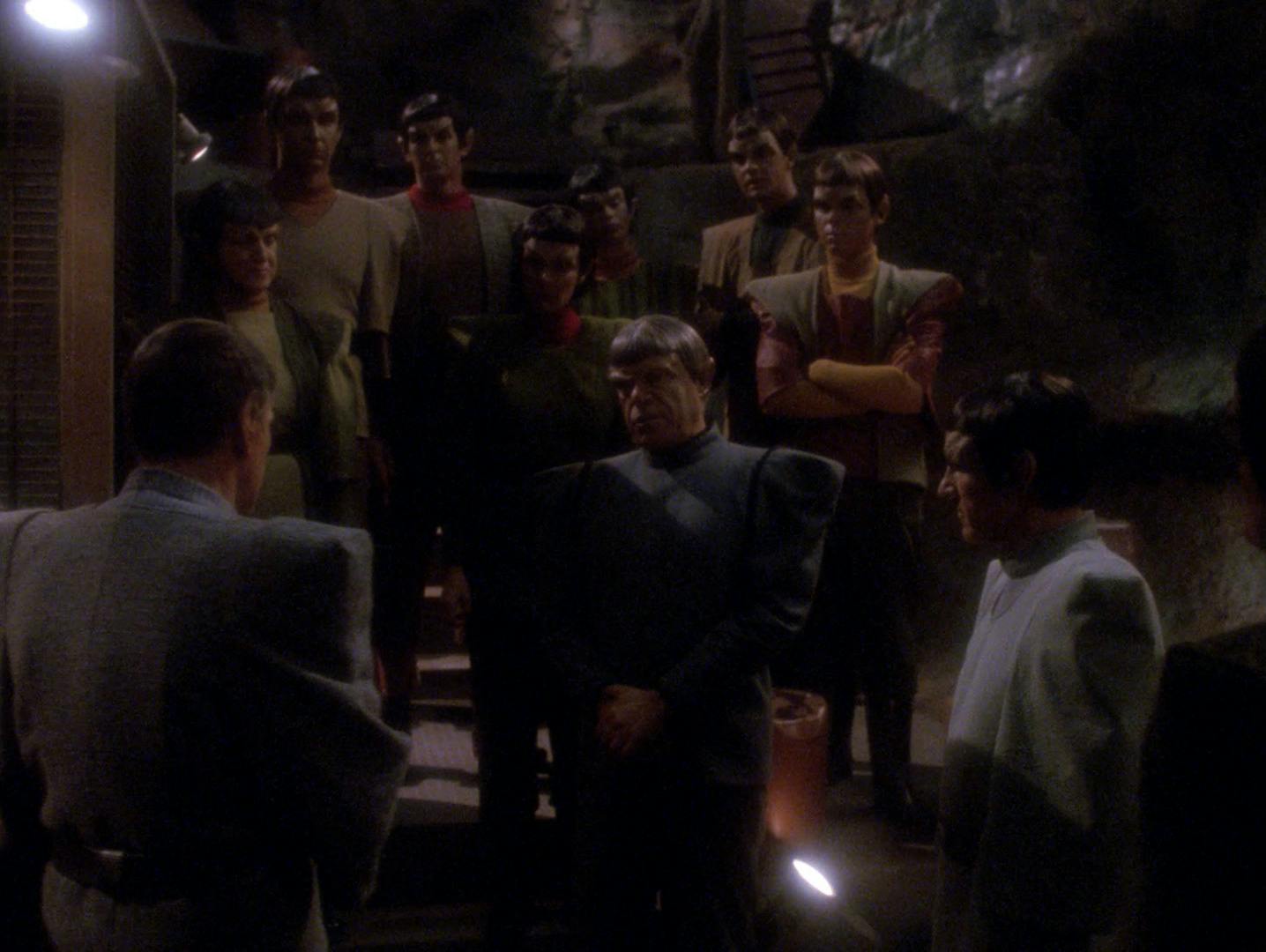
"Unification, Part II"
StarTrek.com
A departure from TOS, Romulan women characters are not sexualized and, at a glance, look no different from the men. Even Romulan civilian clothing that is seen in the TNG two-part episode, "Unification," have similar shoulder-padded tunics and uniformly cut hair on men and women.
From a production standpoint on TNG, there is simply much more representation of Romulan women characters compared to other alien species. There were few examples of Klingon or Cardassian women characters beyond the two reoccurring antagonists Lursa and B'Etor, and no examples of women from other popular species like the Ferengi until later in Deep Space Nine (DS9).
Though there are numerous Romulan women in TOS, TNG, DS9, and Voyager, most Romulan women characters are in the military and are usually in leadership positions or specialists like T'Rul in the DS9 episode, "The Search."
Changing Gender Roles and Clothing Strong Women

"Face of the Enemy"
The best example of not only Romulan women in positions of authority, but also the empowering effects of the shoulder pads is in the TNG Season 6 episode, "Face of the Enemy." In this episode, Counselor Deanna Troi is kidnapped and transformed into Tal Shiar agent Major Rakal to help smuggle Romulan defectors to the Federation aboard a Romulan warbird under the nose of Commander Toreth played by the talented Carolyn Seymour.
The two women are the focus of the plot, as Troi and Toreth play a captivating game of cat and mouse. During a dinner scene aboard the Romulan warbird, the viewer can feel the electric tension in the room as Troi and Toreth exchange barbs debating politics, military strategies, and ethics. Notably, the men in this scene outnumber the women; though, only Toreth and Troi speak during the entire dinner.
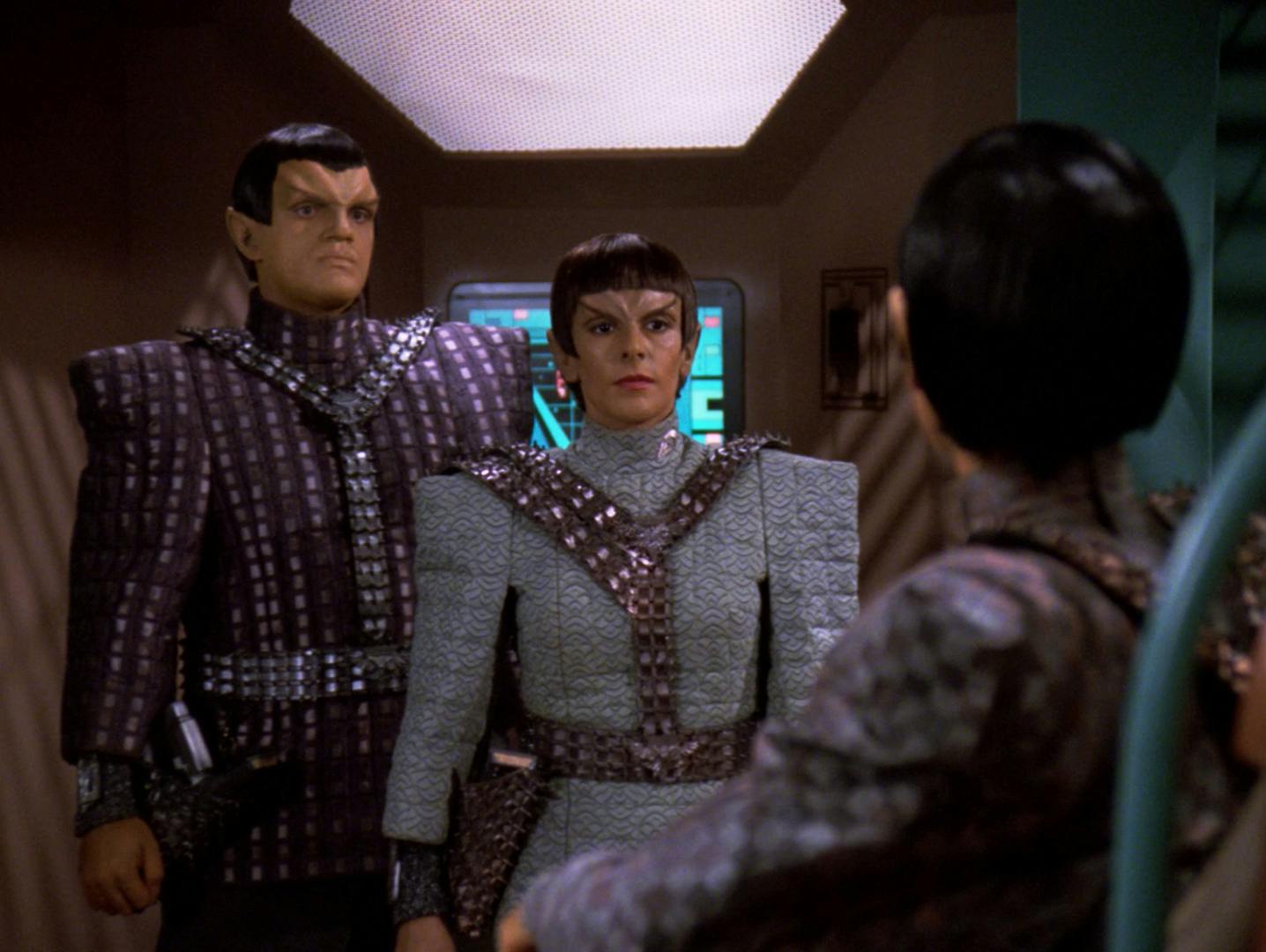
"Face of the Enemy"
StarTrek.com
Furthermore, the shoulder pads endow Troi's character with unprecedented confidence and air of authority even under adverse circumstances. While Marina Sirtis still appears quite feminine as Major Rakal, there is no denying that when her character woke up in the bulky Romulan uniform, Troi owns her newfound authority and utilizes her position as a Tal Shiar agent to intimidate her foes and complete her mission.
The shoulder pads function to empower Troi with a more masculine silhouette without eclipsing her femininity. Major Rakal sitting in the Commander's chair of the Romulan warbird with her imposing shoulders starkly contrasts Councilor Troi's usual seat to the side of Captain Picard wearing a form-fitting catsuit.
The infamous shoulder pads make a comeback in Star Trek: Picard to emphasize the formidable power of Picard's new Romulan foes, namely Narissa and Oh.
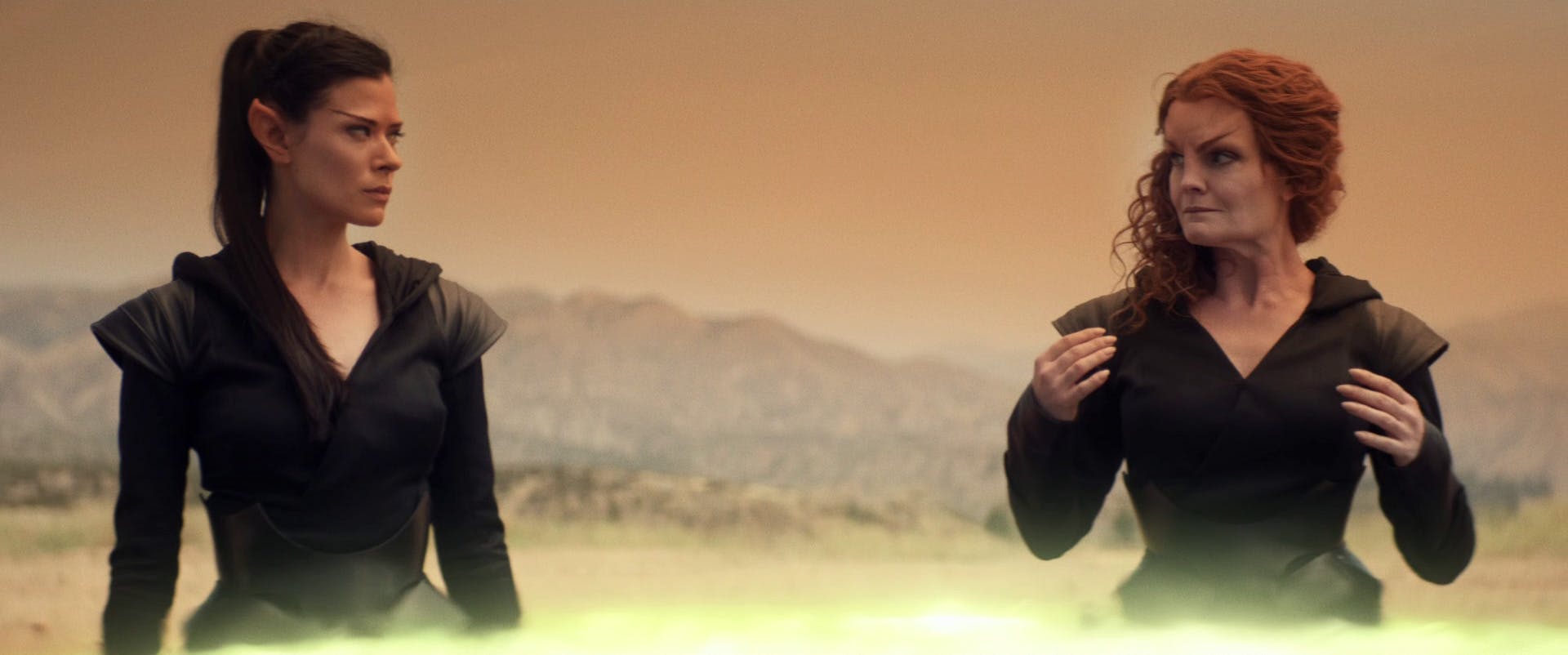
"Broken Pieces"
These two women characters are introduced early in the series as undercover Romulan operatives in Starfleet working for the shadowy Zhat Vash. After Narissa and Oh reveal their true identities, they don the iconic shoulder pads in later episodes.
In "Broken Pieces," viewers obtain insight into Narissa's traumatic past explaining why she joined the secret sect of the Tal Shiar with her aunt Ramdha. In the scene where they experience the 'Abomination,' or vision on Aia they are wearing dark robes with triangular leather shoulder pieces attached to the outside of their tunics.
This new external interpretation of the shoulder pad returns during the season finale, "Et in Arcadia Ego, Part 2" when Commodore Oh exchanges her Federation Head of Security uniform for a sleek black Romulan military ensemble.
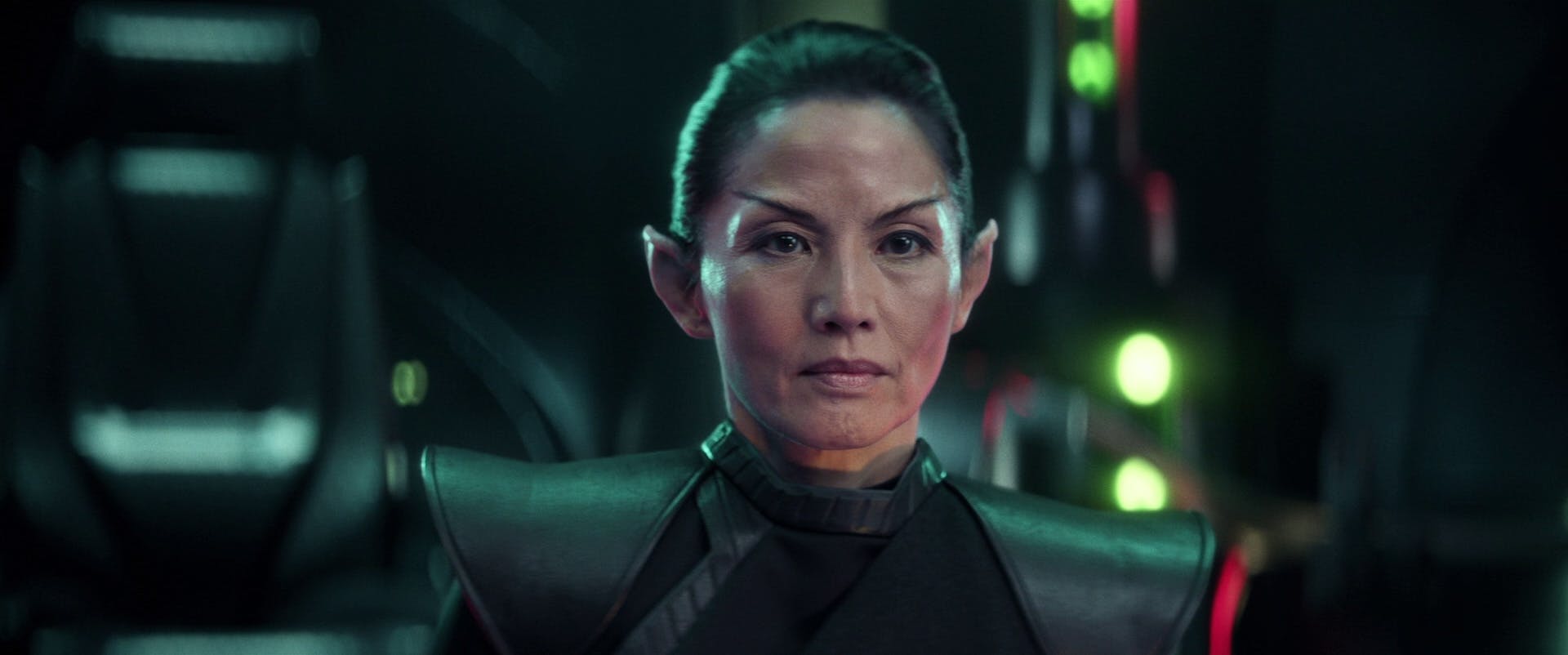
"Et in Arcadia Ego, Part 2"
StarTrek.com
Throughout the season, Narissa and Oh prove to be cunning adversaries for Picard and the crew of La Sirena. Narissa leads the Romulans on The Artifact, a Borg Cube disconnected from the Collective, while Oh cleverly orchestrates the Zhat Vash's plan to ban synthetic lifeforms from inside the Federation.
Watching Commodore Oh in the Picard season finale arriving with her fleet of warbirds and her glorious angular shoulders, my sister and I both snapped our heads to look at each other and exclaimed, "The shoulder pads!"
We instinctively understood from the simple detailing on the shoulders that these costumes were meant to visually strengthen these Romulan women, while also reflecting their positions of authority — the magic of great costuming work!
Love them or hate them, shoulder pads have been a symbol of power in women's fashion since the early 20th Century. Their incorporation into the gender-neutral Romulan uniforms denotes a gender-equal society in the Star Trek universe and continues to communicate a message of women's empowerment to generations of viewers.
A Closer Look at Romulans

